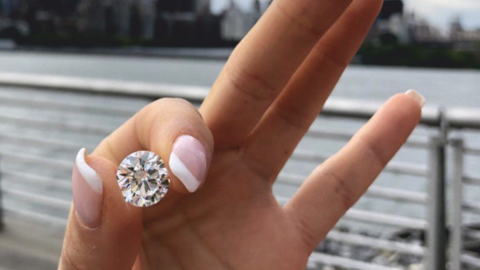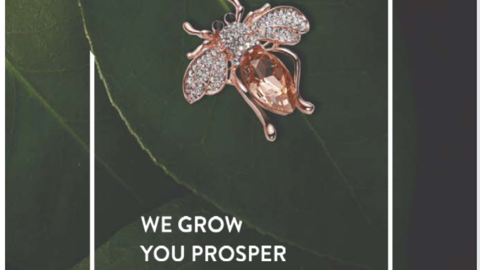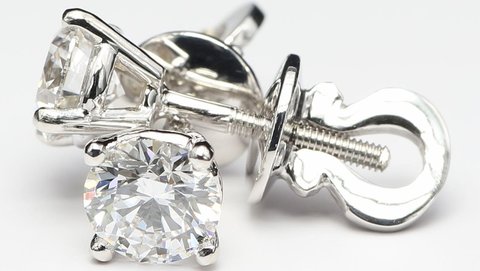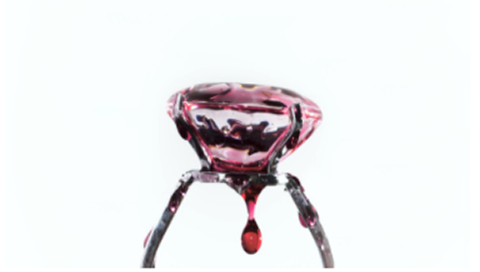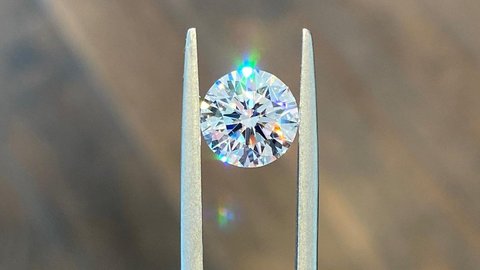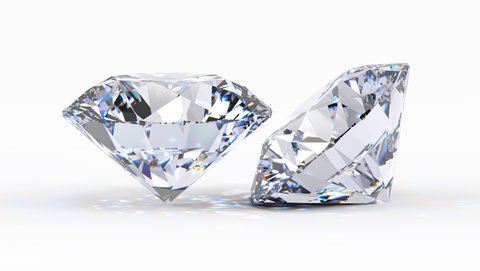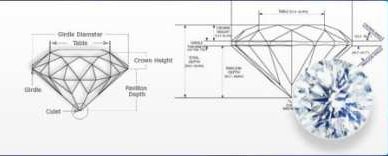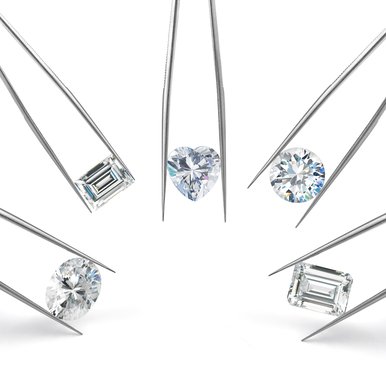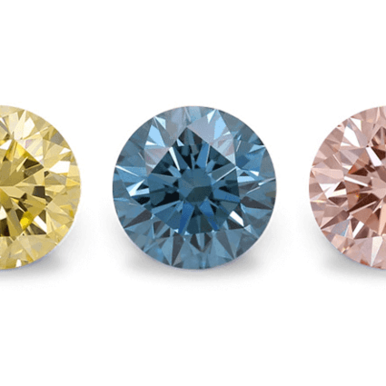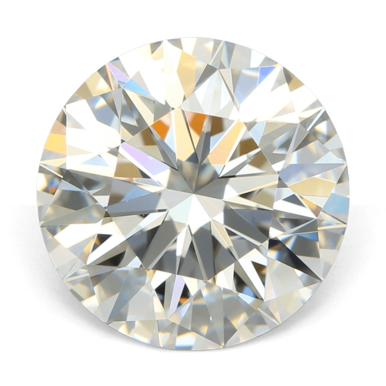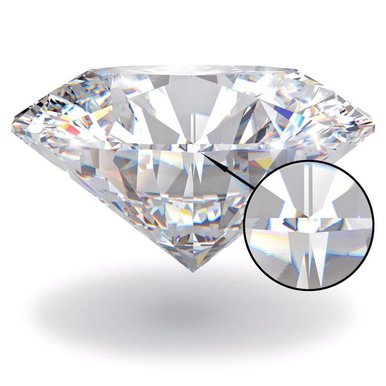Round Cut Diamond Buying Guide
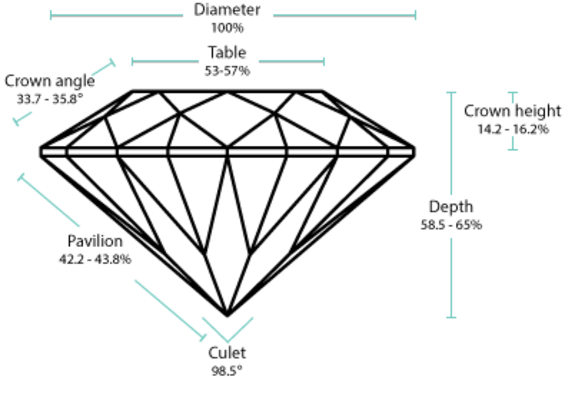
Shape
Round is the most famous diamond cut, as it accounts for nearly half of all polished diamonds. It’s one of the brilliant cuts named after its intense light performance. The ultimate formula for Round Brilliant was developed in 1919 by Marcel Tolkowsky: 58 facets that are all symmetrically cut allow an observer to witness a gorgeous light play from any angle, and especially the table. Perfectly symmetrical and perfectly cut diamond also displays 'Hearts & Arrows'. It's a visual phenomena represented by a pattern of arrows going from the center towards the crown in a table-up view a pattern of hearts forming between the culet and the crown in a cullet-up view. "Hearts & Arrows" only occur in the diamonds possessing most optimal proportions.
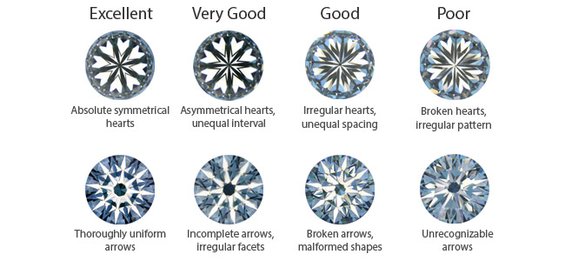
Cut
About 60% of all engagement rings are set with round brilliant diamonds, so picking the right one is a convenient skill to have. The most crucial thing for a round gemstone is its cut. It is best to choose the diamond with an excellent cut, since lower cut grades might result in worse light performance due to unbalanced proportions. The proportional defects of a good cut, such as excessive or inadequate table, or uneven facets, can be seen with a naked eye. Diamonds with an excellent cut might appear bigger in size and more beautiful due to their brilliance. For example, the 1.49ct H SI1 round with an excellent cut will certainly seem bigger and better-looking than the 1.55ct G VS2 with a good cut.
Some cutters intentionally make the diamond’s gridle thicker to increase the weight of a stone. The girdle is the widest part of a diamond and making it thicker doesn’t make the diamond look bigger. Inspecting the thickness of the girdle is a no-brainer upon choosing a diamond. Otherwise a customer might end up paying extra money for a diamond weight that doesn’t really show itself. However, the girdle shouldn’t be ‘very thin’ also because it makes the edges too fragile and may lead to deformation or damages.
Round Cut Diamond Table
| Excellent | Very Good | Good | Fair | Poor | |
| Table % | 53 - 58 | 52 - 53 or 58 - 60 | 51 or 61 - 64 | 50 or 65 - 69 | < 50 or > 69 |
| Depth % | 59 - 62.3 | 58 - 58.9 or 62.4 - 63.5 | 57.5 - 57.9 or 63.6 - 64.1 | 56.5 - 57.4 or 64.2 - 65 | < 56.5 or > 65 |
| Crown Angle | 34 - 34.9 | 32.1 - 33.9 or 35 - 35.9 | 30.1 - 32 or 36 - 37.9 | 29 - 30 | < 29 or > 40.5 |
| Pavilion Depth | 42.8 - 43.2 | 42 - 42.7 or 43.3 - 43.9 | 41 - 41.9 or 44 - 45.5 | 39 - 40.9 or 45.6 - 48 | < 39 or > 48 |
| Girdle | Thin to Slightly Thick | Very Thin to Clightly Thick | Very Thin to Thick | Very Thin to Very Thick | Extremely Thin to Extremely Thick |
| Culet | None | Very Small | Small | Medium | > Medium |
| L/W Ratio | 1.00 - 1.01 | 1.02 | > 1.02 | ||
The ideal ratio for a round cut diamond is between 1.00 and 1.01, with 1.00 representing a perfectly round shape. This ratio ensures that the diamond's proportions are well-balanced, allowing for optimal light reflection and refraction.
Proportions play a crucial role in determining the overall cut quality and appearance of a round cut diamond. The depth percentage, which is the height of the diamond measured from the culet to the table divided by its diameter, should fall between 59% and 62.3%. The table percentage, which is the width of the diamond's table divided by its diameter, should be between 53% and 58%. These proportions work together to ensure that the diamond has the right balance of brilliance, fire, and scintillation.
A round cut diamond with a ratio outside the ideal range or with proportions that deviate significantly from the recommended percentages may suffer from reduced light performance and diminished overall appearance. For instance, a diamond with a ratio of 1.02 may appear slightly oval or elongated, while a ratio below 1.00 may make the diamond appear squat or compressed. Similarly, a diamond with a depth percentage that is too high or too low may cause light to escape through the sides or bottom of the stone, resulting in a loss of brilliance and fire.
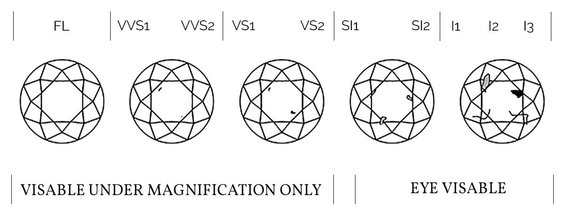
Clarity
Clarity of a round cut diamond is graded from IF (intermally flawless) to I3 (included). Inclusions don’t influence the overall appearance of a round diamond as much as they do with some other shapes. But it's still important to try avoiding impurities, especially if they are located underneath the table. The inclusions that are located closer to the edges, on the upper part of the pavilion or the crown, won’t really affect the diamond's look and ability to sparkle. A good jeweler will be able to hide most of such inclusions under the prong (the metal part that holds the stone to the ring or any other piece of jewelry). Gemstones with the inclusions that are not seen in a table-up view are called 'eye clean'. It's best to go specifically for this type of diamonds. Not only will they be the best looking of the bunch, but also might be the more afoordable option, as even the stones with SI2 clarity grade can be 'eye clean'.
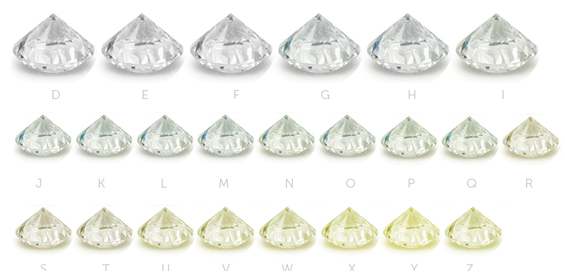
Color
Round diamond colors are graded from D to Z, with D being the whitest and getting more and more yellow moving to Z. The diamonds within one color group (colorless, near colorless, etc.) will not differ significantly in terms of appearance, however the price difference can be big. It's better to go for a near colorless diamond, but not lower than I, since such stone won't exhibit much of a yellow tint, but will be much more affordable than a colorless one. The right balanced proportions, right thickness of the girdle, and an 'eye-clean' look can make up for a lower color, such as J, so the diamond will still look beautiful by displaying a high amount of brilliance. However, color grade is still an important factor and something to inspect closely.


